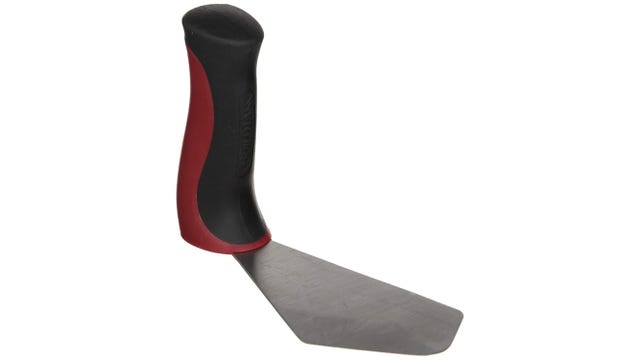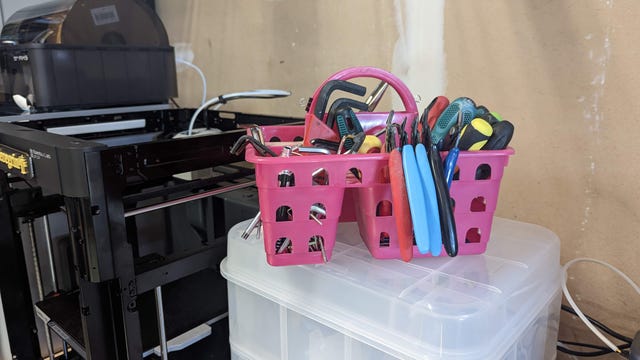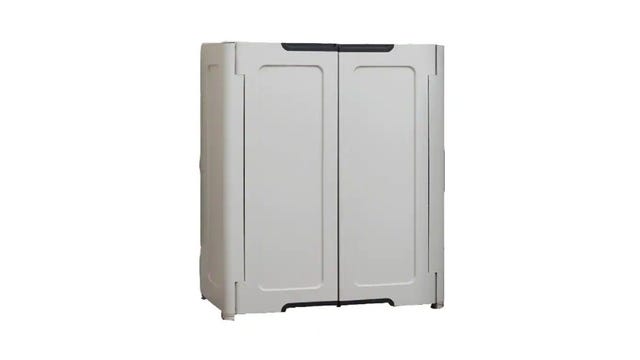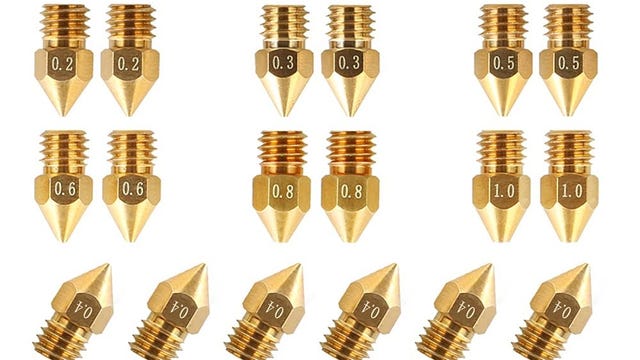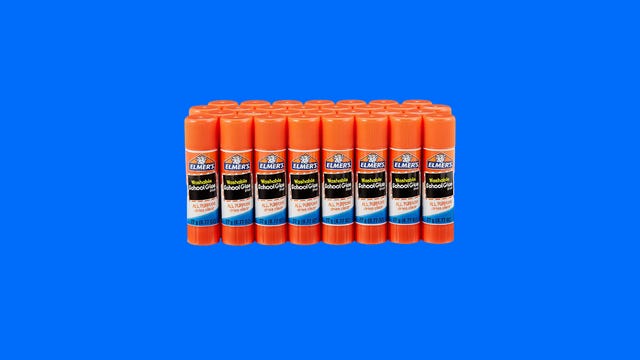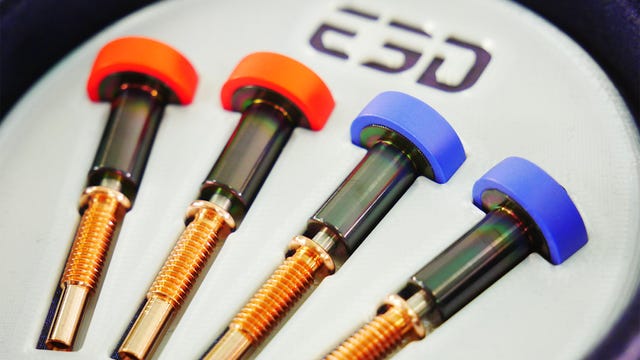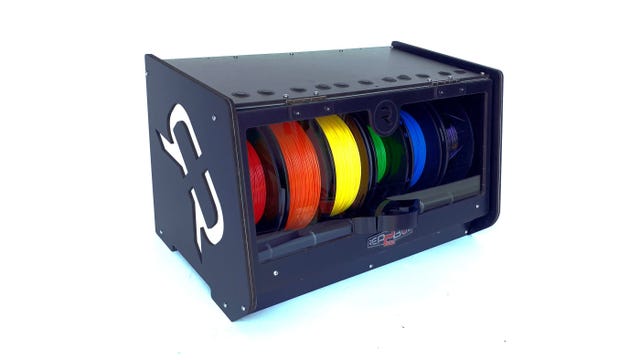With some hobbies, extra tools and accessories can make them even more fun. 3D-printing is one, and the addition of a good set of extras will make your 3D-printing time much easier. Often these accessories are simple — a set of snips for cutting filament or a bit of glue to help bed adhesion — but there are also new pieces of hardware that can significantly improve your print quality or give your 3D printer powers it never had before. More than that, though, good accessories can make even the best 3D printers run above and beyond their normal scope.
I’ve amassed a huge number of helpful accessories after nearly a decade of 3D printing and have researched many others. Amazon is a great resource for finding basic 3D-printing accessories, and California-based MatterHackers has everything you need for more advanced upgrades and gear.
Best accessories for beginners
While every 3D printer comes with a paint scraper that you can use to remove models from the build plate, not all are created equal. Most 3D printer scrapers don’t allow you to get the blade low enough to lift a model without damaging the build surface. I use the Buildtak 3D printer scraper because it can swipe under the model without gouging down, making them pop right back up.
These little storage caddies are incredibly helpful for more than just storing shower products. The separate compartments make it easy to store all of your hex key wrenches, scrapers and filament cutters in a way that makes it easy to move them around your workspace with the handy handle. I have three of these in my workshop and I use them for 3D-printing tools, assorted glues and sandpaper. It makes life a lot easier.
A digital caliper is a helpful 3D-printing accessory, especially if you’re creating your own models. Most can measure details down to a thousandth of a millimeter, which lets you design with a high degree of accuracy.
Having a set of calipers also helps you measure your prints to make sure they’re printing in the correct size and shape.
Having a central place to store your materials is important to keep them safe and dry. These cabinets from Home Depot are expandable and easy to build. They’re perfect for stacking your filament or resins safely, and if you add a small dehumidifier or desiccant packets, you can keep everything dry, too.
Most 3D printers come to you with a 0.4mm nozzle, which is fine for most uses. There are a lot of cool projects you can make with larger nozzles, though: Try making thick vases using a 0.8mm nozzle or detailed miniatures with a 0.2mm nozzle. Having a variety of nozzles will expand your horizons to no end.
These Mk8 nozzles are designed for the Creality Ender 3, but many printer companies either use the same Mk8 nozzles or variety packs of their own.
Magigoo is like a glue stick on steroids. It is specifically designed to hold 3D prints to the build plate while printing but comes loose easily when the bed is finally cooled. It’s incredibly satisfying to print models that are barely touching the build surface that act like they are held down with cement. A small bottle goes a long way too, so it’s worth the price.
Did you know that the 3D-printing community uses so much Aqua Net hairspray that Amazon’s “Frequently bought together” section shows filament and replacement printer beds? Aqua Net is used as a transition adhesive that both helps your filament stick to the build plate, and when it gets cold, makes it easier to remove. You have to be careful not to spray it onto any moving parts, but if you take off your removable build plate and spray it gently and evenly you will see better results immediately.
Models often have sharp edges when they first come off of the build plate, especially if you’ve used a brim to anchor them down. A deburring tool like this smoothes those edges with a simple swipe across the corner. It takes a little getting used to, but if you’re making something for people to handle, a deburring tool is a must.
If you live here in the US, you may well have a set of hex wrenches that you use for most things. However, 3D printers are made using metric measurements, and not inches, so they will either be loose and damage the nut or not fit at all. A good set of metric hex wrenches are affordable and make 3D printing easier.
Desiccant is a much needed tool in the fight against moisture. Even the best 3D-printing filament can be degraded by absorbing too much moisture, and if you live in a damp climate, storing your filament in a cool dry place with a desiccant pouch is a great way to keep it usable for longer. These pouches are a little pricier than some, but they can be recharged by heating them up so you can use them again and again.
Like the hairspray, glue sticks help hold a print down, while also adding a barrier between the print and the plate. Some materials stick a little too well to a build plate and can tear a mat or even crack a glass plate. Glue sticks are water soluble too, so it’s easy to wash off with soap and water.
Accessories for intermediate and advanced users
If you’re hoping to print a filament like ABS, you’ll need your 3D printer to be very hot with no breezes. If you live in a particularly cold climate an enclosure is a helpful way to warm up the area around your 3D printer without having to pay a fortune on heating bills. The Wham Bam HotBox has two sizes, so even if you have a bigger machine you can reap the benefits of a warmer build area.
One of the best upgrades to be released in recent years is the Revo rapid change system from E3D. Available for a huge number of 3D printers, this hotend replacement adds the ability to quickly swap out your nozzles without the use of wrenches and pliers. You can remove the filament, let the nozzle cool down and twist it off with your fingers.
Being able to easily swap nozzles opens up new printing techniques with larger nozzles for strength and smaller ones for detail. It is a must-do upgrade for any compatible machine.
Nozzles are consumable in 3D printing and you can expect to use them up fairly frequently. If you print materials with abrasive materials such as carbon fiber, wood or even glow in the dark, your nozzle could be destroyed in just one eight-hour session. The ObXidian nozzle is specially hardened to reduce wear and tear and keep your nozzle printing for much longer.
It’s also a part of the Revo system I just mentioned, so can be easily swapped out for different sizes or other nozzles easily.
The Palette 3 is a multimaterial unit that lets your standard 3D printer print multiple colors or types of filament. It opens up a huge amount of variety in your 3D printing and can help you create a truly unique model. You can even take an existing digital model and “paint” colors onto it so that when it prints, it is a multitude of — well up to eight — colors.
The RepBox is a community favorite for a number of reasons. The creator is an awesome advocate for 3D printing and the box itself is a fantastic design that can be mounted or sat on a workbench. The RepBox holds six 1kg rolls of filament and comes with several dehydrating cases to keep them fresh. The filament is fed out of the box directly into a Palette system or multiple printers without ever touching the moist air.
3D printer accessories FAQ
What’s the best 3D-printing tool for beginners?
When you first start 3D printing, the most important thing to get right is your first layer. It takes time to get the build plate level enough to print consistently, so any tool that can help with that is important. Any of the bed adhesives in this list will help your first layer lay down better, and make it easier to remove the print once it is done.
Glue sticks and hairspray may seem like low-tech solutions for a high-tech machine, but they work and they’re cheap.

